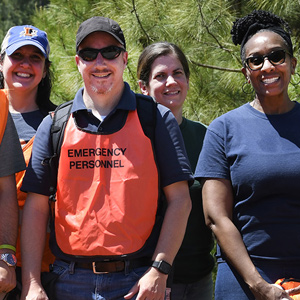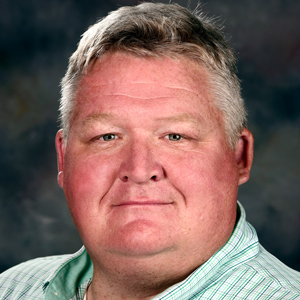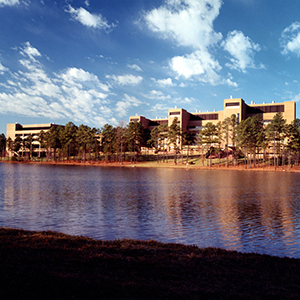Five entries from NIEHS won Green Champions Awards from the Department of Health and Human Services (HHS). These annual awards recognize the excellence and creativity of HHS employees in their efforts to create more sustainable and energy-efficient workplaces.
“From energy and water conservation to composting and sustainable design, NIEHS continues to find ways to develop award-winning programs that make us leaders in this area,” said Rick Woychik, Ph.D., the institute’s acting director.
NIH Freezer Challenge — Leesa Deterding, Ph.D., and Jason Williams, Ph.D.
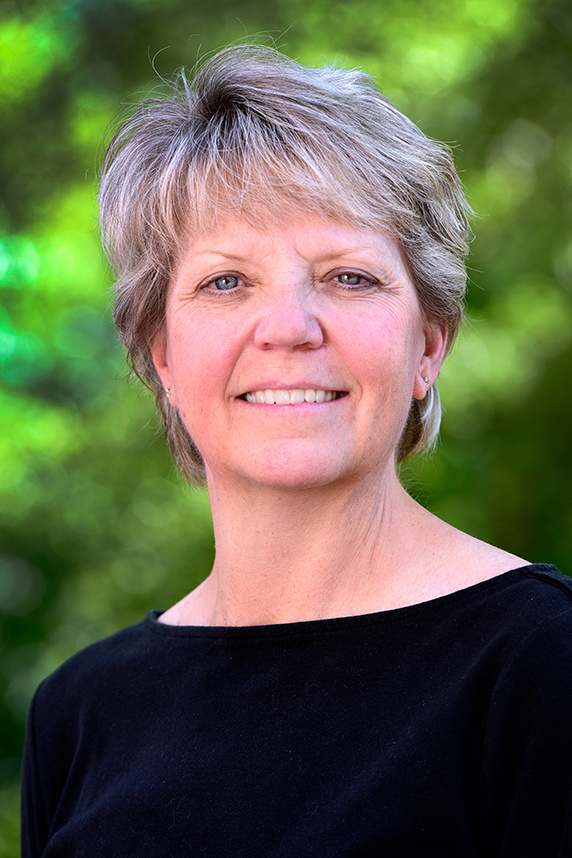 Deterding said that Paul Johnson, manager of the NIEHS Environmental Protection and Stewardship Programs, suggested participating in the freezer challenge. (Photo courtesy of Steve McCaw)
Deterding said that Paul Johnson, manager of the NIEHS Environmental Protection and Stewardship Programs, suggested participating in the freezer challenge. (Photo courtesy of Steve McCaw)NIEHS participated in the National Institutes of Health (NIH) first-ever freezer challenge to reduce the energy consumed by freezers used by NIH laboratories. The institute replaced older freezers in one portion of the building with new energy-efficient models.
They also adopted energy-saving strategies, such as discarding unnecessary samples and performing routine freezer defrosts. As a result, the institute achieved savings of $3,814, a reduction in energy consumption by 34,675 kilowatt-hours, and a decrease in carbon emissions by 14 metric tons.
“We are happy to help with the energy savings at NIEHS in any way that we can,” said Leesa Deterding, Ph.D., co-director of the Mass Spectrometry Research and Support Group.
All-Electric Vehicles — Heather Davis, Tim Schilens, and Terry Wells
The NIEHS Facilities Management Branch adopted three all-electric, low-speed vehicles for its Maintenance and Operations program. The switch from gas to electric reduced the institute's carbon footprint by more than 30,000 pounds of carbon emissions and saved $25,000 in fuel costs over a five-year period.
The low-speed vehicles meet U.S. Department of Transportation safety requirements and the needs of the Maintenance and Operations department.
Vivarium Animal Feed Composting Initiative — Gordan Caviness, Debbie Gaffney, Neil Grove, Paul Johnson, Paul Poliachik, Tim Schilens, Bill Steinmetz, Bill Stutzbach, Kethard Thomas, and Dennis Will
The NIEHS Comparative Medicine Branch sent approximately 46 tons per year of used, unconsumed animal feed to the compost bin. The initiative reduced carbon emissions by 90,000 pounds and decreased consumption of natural gas by one million cubic feet.
The effort also eliminated the use of 3,000 trash bags annually, significantly reducing the use of plastics associated with operating the animal vivarium.
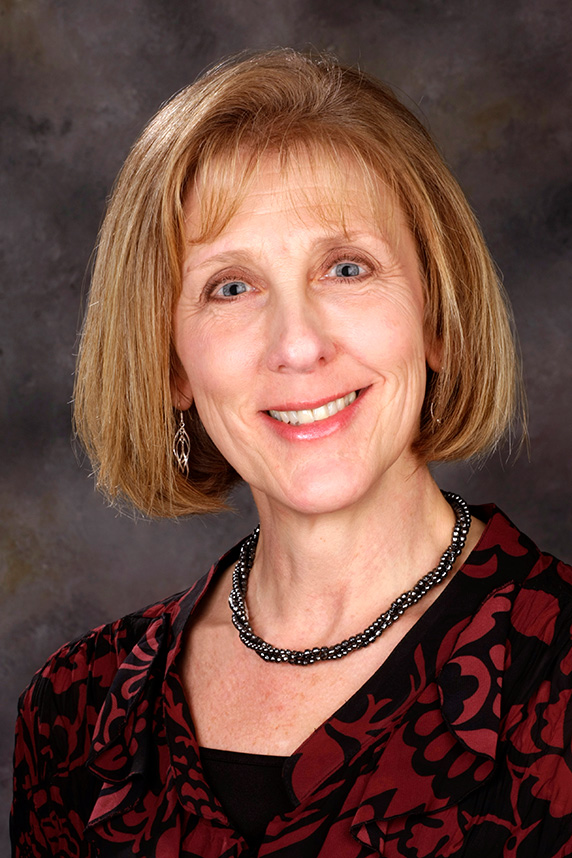 Del Corral has won several Green Champions awards in the past for her efforts to make NIEHS facilities more sustainable. (Photo courtesy of Steve McCaw)
Del Corral has won several Green Champions awards in the past for her efforts to make NIEHS facilities more sustainable. (Photo courtesy of Steve McCaw)Rall Building Public Space Renovations — Rhonda Carroll, Debi Del Corral, Alison Karver, and Amanda Thompson
Through NIEHS efforts, the Rodbell Conference Center and Rall Building lobby were made safer, more flexible, and more energy efficient. Team members enlarged the conference facility from a 197- to a 300-person room that can be subdivided into three smaller spaces.
In addition, they replaced the windows and the skylight in the lobby with electrochromic glass that automatically adjusts according to the intensity of the sun, like smart sunglasses, which controls heat load and glare while allowing sunlight. The glass saved over 40,000 kilowatt-hours of energy.
“Focusing on sustainability helps us save resources that can be used for science,” said Debi Del Corral, facility liaison for Space Management. “It proves that we believe the environment is important to us, so we are trying to do all we can to save it.”
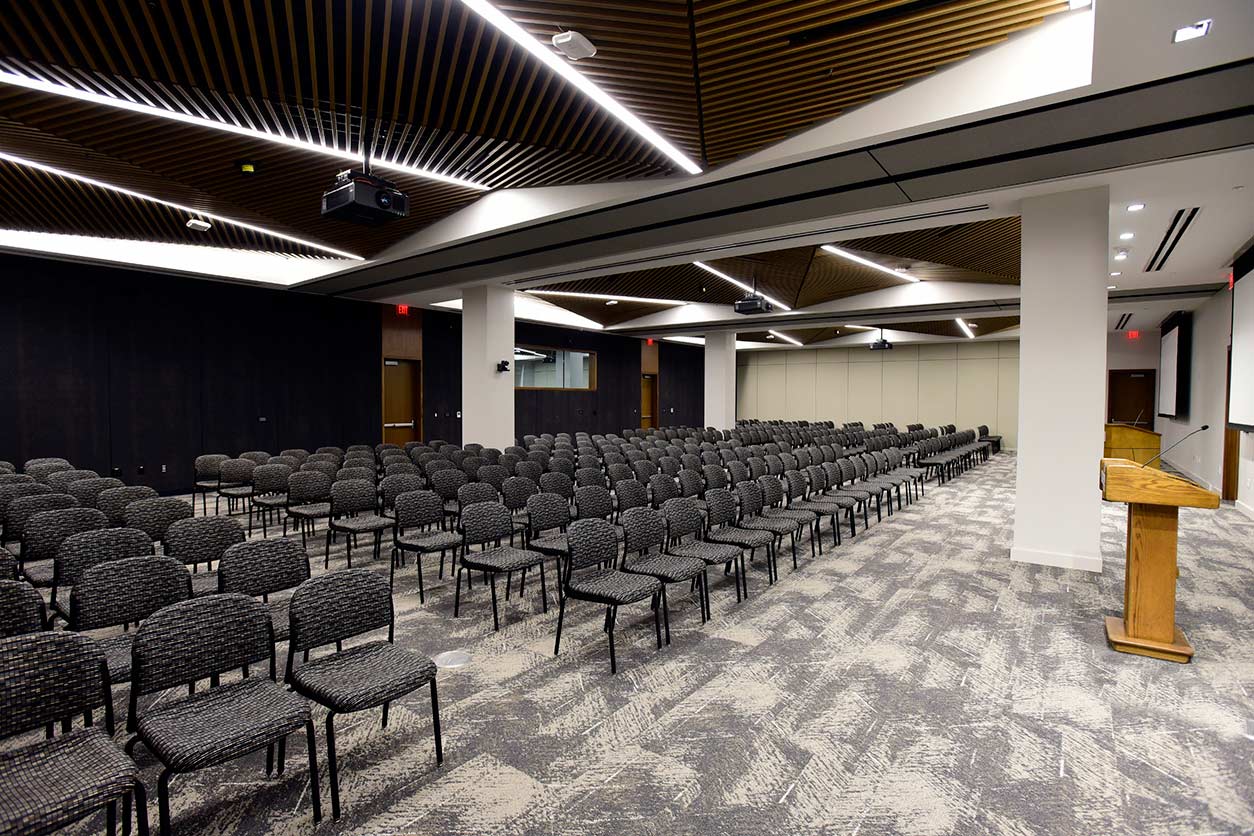 When renovating the Rodbell Conference Center to make the space safer, NIEHS took the opportunity to make other improvements. (Photo courtesy of Steve McCaw)
When renovating the Rodbell Conference Center to make the space safer, NIEHS took the opportunity to make other improvements. (Photo courtesy of Steve McCaw)Replacement of Chilled Water Fan Coil Loop Piping in Rall Building — Kyle Askins, Daniel Burk, Brian Harris, and James Stancil
The NIH Office of Research Facilities replaced a chilled water fan coil loop pipe in the Rall Building, saving 119,000 gallons annually, or the equivalent to 4,760 ten-minute showers or 901,300 bottles of drinking water.
This project eliminated the risk for catastrophic failure of the corroded 40-year old steel pipes. It also reduced the energy required to pump water in the building by clearing flow restrictions in the piping.
(Marla Broadfoot, Ph.D., is a contract writer for the NIEHS Office of Communications and Public Liaison.)







